Wildflowers, Grasses and Other Nonwoody Plants
Media

Species Types
Scientific Name
Astragalus crassicarpus (formerly A. mexicanus)
Description
Ground plum is a legume that bears plumlike, edible fruits. Its short, spikelike clusters of pea flowers can be white, cream, yellow, pink, or violet.
Media
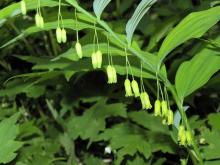
Species Types
Scientific Name
Polygonatum biflorum
Description
Solomon's seal grows statewide in moist, rich earth. The greenish-white flowers dangle like little bells beneath the leaves, under the gracefully arching stems.
Media
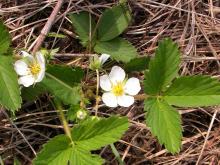
Species Types
Scientific Name
Fragaria virginiana
Description
Wild strawberry is one of the parents of the cultivated strawberry and is one of our prized native wild edibles. It’s also a valuable food for innumerable animals, and it’s attractive in native wildflower gardens.
Media

Species Types
Scientific Name
Pueraria montana
Description
Of the many invasive nonnative plants that were originally introduced to stop soil erosion and improve soils, kudzu is one of the worst. This “vine that ate the South” is often the first plant that comes to mind when we think of “invasive plants.”
Media
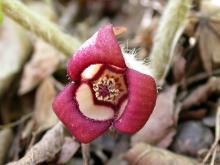
Species Types
Scientific Name
Asarum canadense
Description
In spring, wildflower lovers locate wild ginger by looking for its unique, hairy, heart-shaped leaves, then by stooping to view the small, three-parted brown flowers that form between the leaf bases, close to the ground.
Media
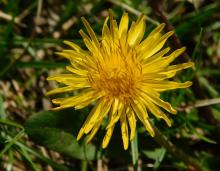
Species Types
Scientific Name
Taraxacum officinale
Description
The common dandelion is a well-known common weed of lawns, roadsides, and other disturbed places. Originally from Europe, it occurs nearly worldwide.
Media
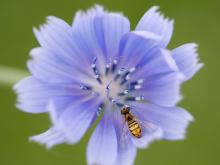
Species Types
Scientific Name
Lactuca floridana
Description
A true lettuce that can be eaten as a cooked or salad green, Florida lettuce has lavender to purplish blue flowers and grows statewide.
Media
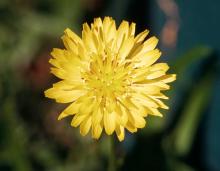
Species Types
Scientific Name
Pyrrhopappus carolinianus
Description
One of several native plants called dandelions, Carolina false dandelion is an annual with sulphur yellow flowers and puffy seedheads.
Media
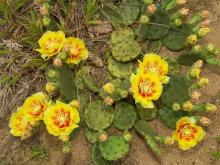
Species Types
Scientific Name
Opuntia humifusa (formerly O. compressa)
Description
Cacti make us think of the desert southwest, but there is at least one species native to Missouri. This prickly pear grows in glades, sand prairies, rocky open hillsides, and other dry, sun-soaked areas.
Media

Species Types
Scientific Name
Oenothera biennis
Description
True to its name, common evening primrose is the most common and widespread evening primrose in Missouri. It is most noticeable late in the season, when it reaches its greatest height and the flowers at the top are most visible.
See Also
About Wildflowers, Grasses and Other Nonwoody Plants in Missouri
A very simple way of thinking about the green world is to divide the vascular plants into two groups: woody and nonwoody (or herbaceous). But this is an artificial division; many plant families include some species that are woody and some that are not. The diversity of nonwoody vascular plants is staggering! Think of all the ferns, grasses, sedges, lilies, peas, sunflowers, nightshades, milkweeds, mustards, mints, and mallows — weeds and wildflowers — and many more!





















